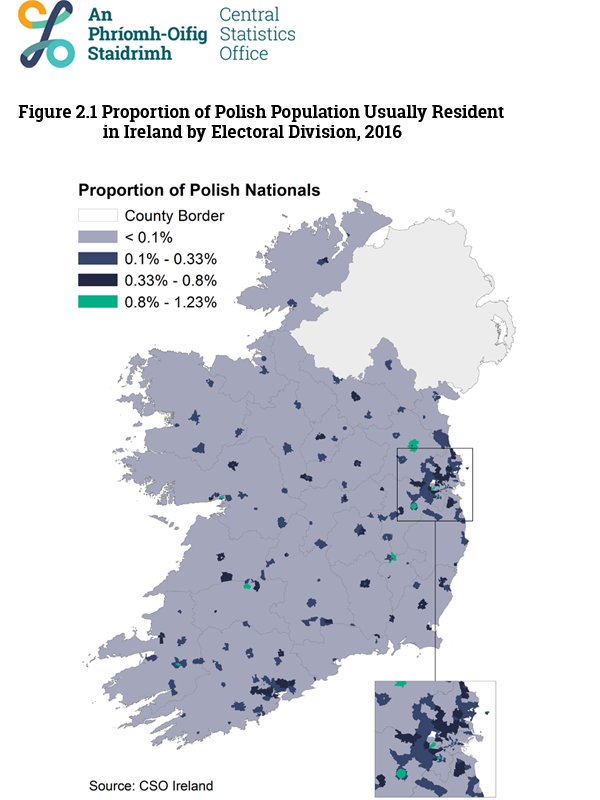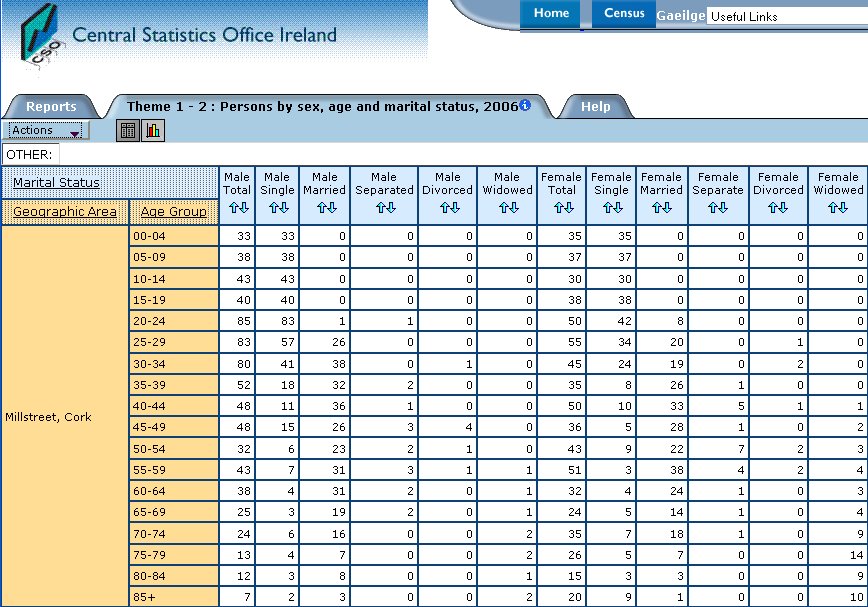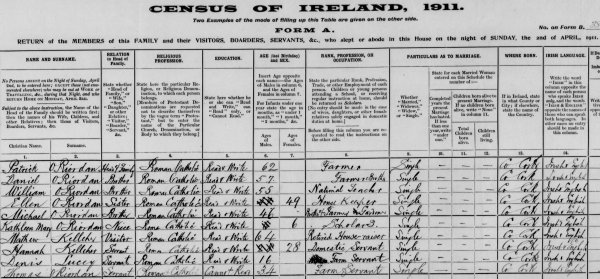 Like it or not, we live on the outer fringes of the commuter belt for Cork City. We all know lots of people that head off early in the morning to work, and are home in the evenings just in time to see their children to bed. We saw a map recently (above right) which shows where people travelling long distances to work were from. As expected there is a large commuter belt around the larger cities of Dublin, Cork, Galway, and Limerick.
Like it or not, we live on the outer fringes of the commuter belt for Cork City. We all know lots of people that head off early in the morning to work, and are home in the evenings just in time to see their children to bed. We saw a map recently (above right) which shows where people travelling long distances to work were from. As expected there is a large commuter belt around the larger cities of Dublin, Cork, Galway, and Limerick.
Expecting to see Millstreet as one of the worst affected commuter areas, we zoomed into the Millstreet area (see the map below), and we were thankfully surprised to see that Millstreet fared much better that other areas around us. [read more …] “Commuting Times from Millstreet”




